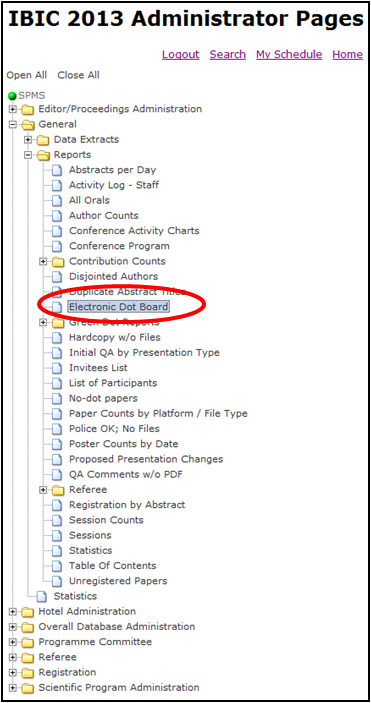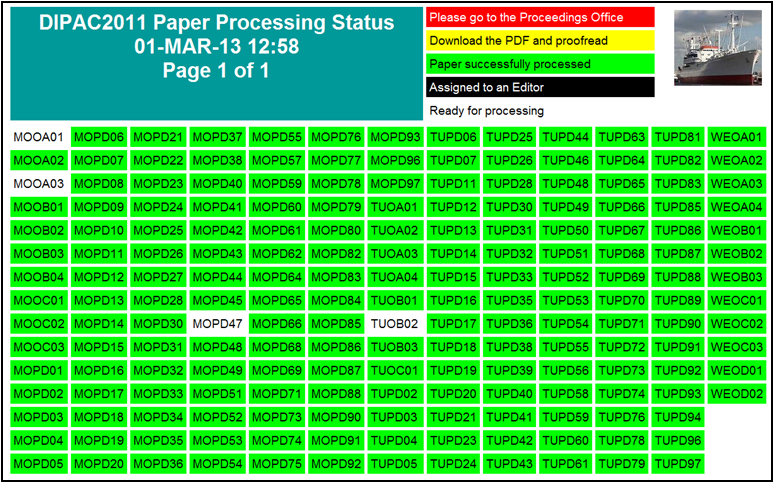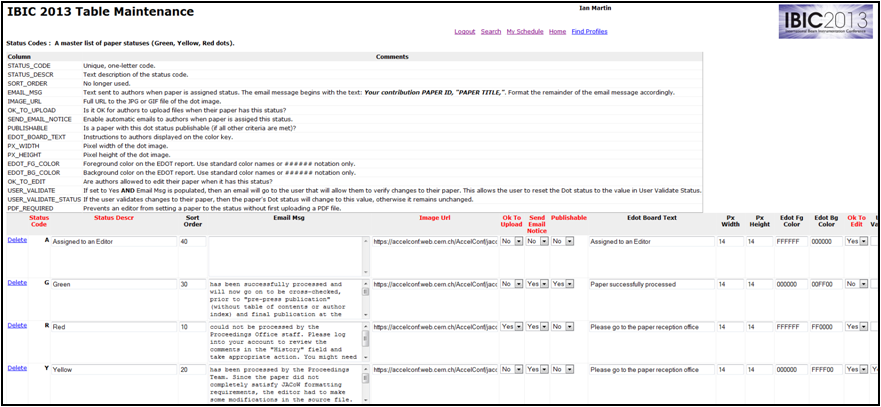
Paper Status CodesThe now familiar processing status codes:
These codes came into being at EPAC'96 when it was decided to introduce a form of feedback on status of processing of files of contributions to the proceedings. Electronic publication was in its early days, and it was hoped that this feedback would help "train" or "prepare" authors for the task of preparing electronic versions of their contributions to conference proceedings. John Poole, the first JACoW chair, invented the original "dotting board," where author reception staff manually carried processed papers with the editor's status dot to a board outside of the proceedings office and stuck a corresponding dot on the board. This was very labour intensive, until the database designer, Matt Arena, developed an electronic dotting board. This is normally displayed on a large flat screen close to the author reception and reflects the status of processing of papers taken directly from the meta data in the SPMS. The e-dot board screen can be viewed via "General/Reports/Electronic Dot Board", or more specifically at the conference SPMS URL (eg https://oraweb.cern.ch/pls/ipac2011/edot.html)   The look of the electronic dotting board is tweaked to fit the available monitor via
 SPMS instances are delivered with default settings at
 The settings are for green, yellow, and red dots (the dots are images stored at Fermilab), though it is in principle possible to change or update the URLs and add colors. Note that the image URLs must be https, not http. As of mid-2022, the proper image URLs prefixed by https) are This screen includes a field for editors to enter an e-mail message that is triggered automatically to each primary author each time the status of processing is modified. This screen furthermore allows for setting parameters for when authors are allowed to upload files, depending on the status of the processed contribution. The criteria are usually:
Another parameter included in this screen is whether the paper is publishable.
Also in this screen are the parameters for the e-dot board:
The next column on the right of this screen controls whether authors can edit the abstract of the contribution in the SPMS. Following this, the two columns "User Validate" and "User Validate Status" are used to allow authors to change the status of their contributions. If "User Validate" is set to "Yes", and the email message box is populated, the author will get an email inviting them to log in to their SPMS account, proofread their contribution, and if they are happy to change the status of their paper to the value entered in the "User Validate Status" column. The final column on this screen is the "PDF Required" column. This prevents editors from accidentally setting a contribution to green, without first uploading a PDF file. |
